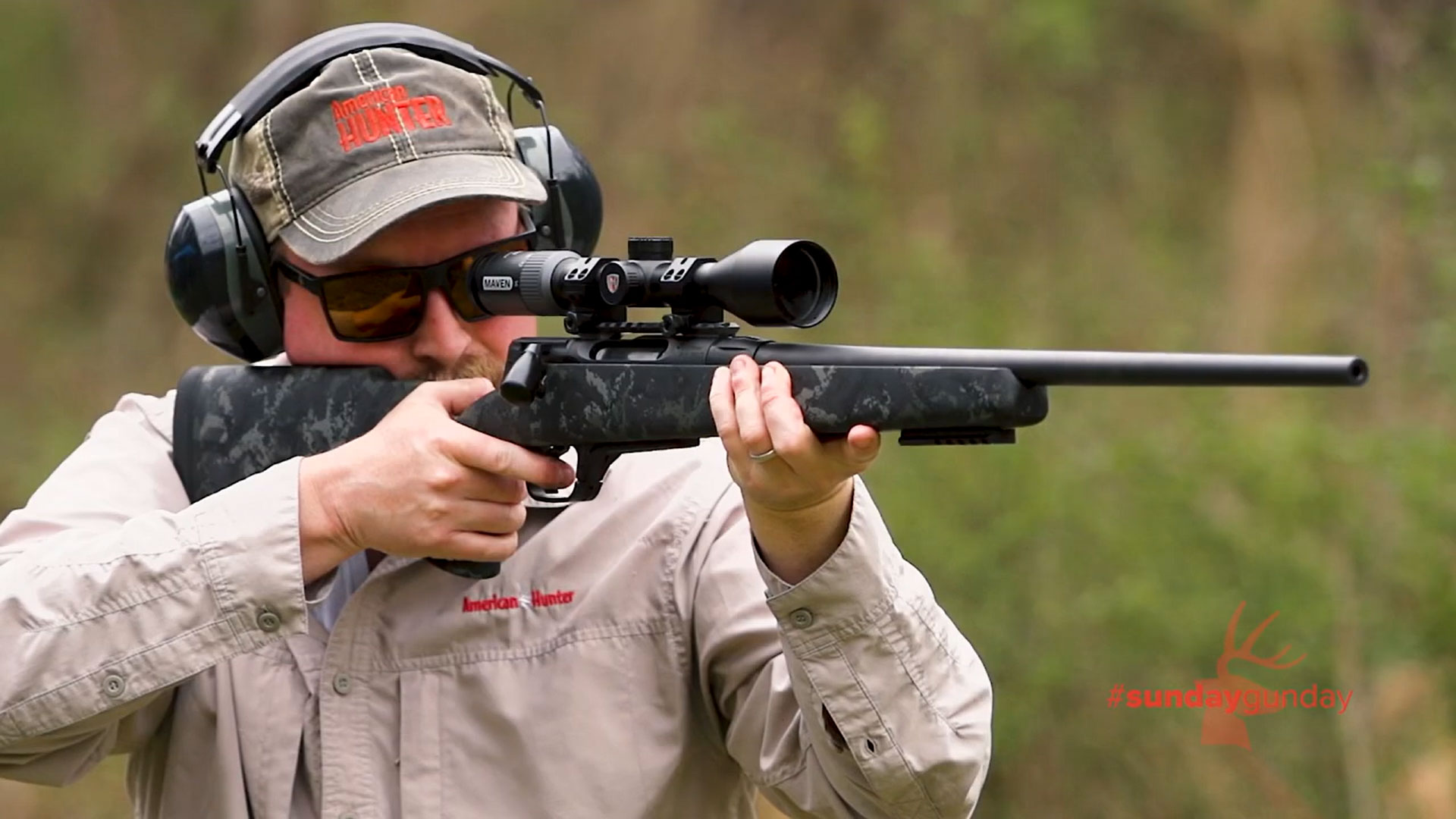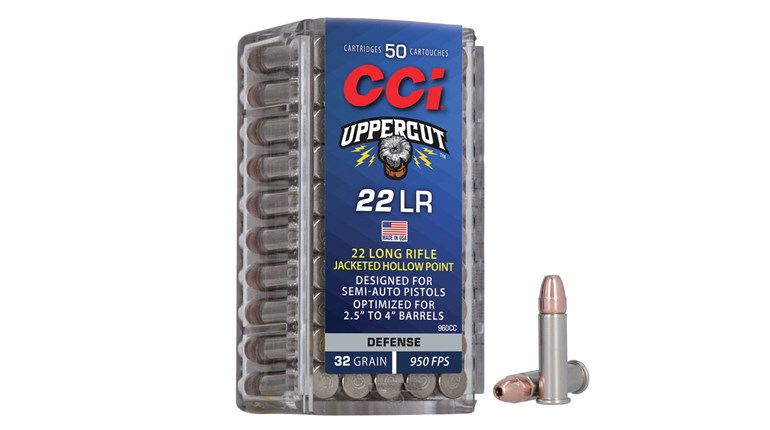
It was mid-May 2022, and the South Texas daytime heat and humidity made for a brutal combination—the kind of one-two punch to my system that required the near-continuous drinking of water even when I was thoroughly sick of that water. I was staying on the family-owned Gonzales Ranch north of Harlingen, there to hunt hogs and coyotes at night, but I couldn’t stay in the ranch house all day. So, I and three others ventured out to do some pest control on the ranch’s tanks, what people from the Upper Midwest like myself usually refer to as “ponds.” Many of the tanks were besieged by invasive nutria, and the digging and tunneling rodents were actively undermining the earthen banks surrounding the tanks.
I hadn’t really come here, at the invitation of Armasight, a manufacturer of thermal and night vision optics, to hunt rodents. But all I was doing at the ranch house was eating junk food and watching bad hunting TV shows, so out to the tanks we went in search of nutria.
I also wanted to test out my hunting rig in the field. My rifle was a Henry Repeating Arms All-Weather lever action chambered in .357 Magnum, and I’d mounted a new Armasight Contractor 25 thermal riflescope on it. For ammunition, I used Federal Premium’s HammerDown .357 Magnum, specifically designed for use in carbine-length barrels.
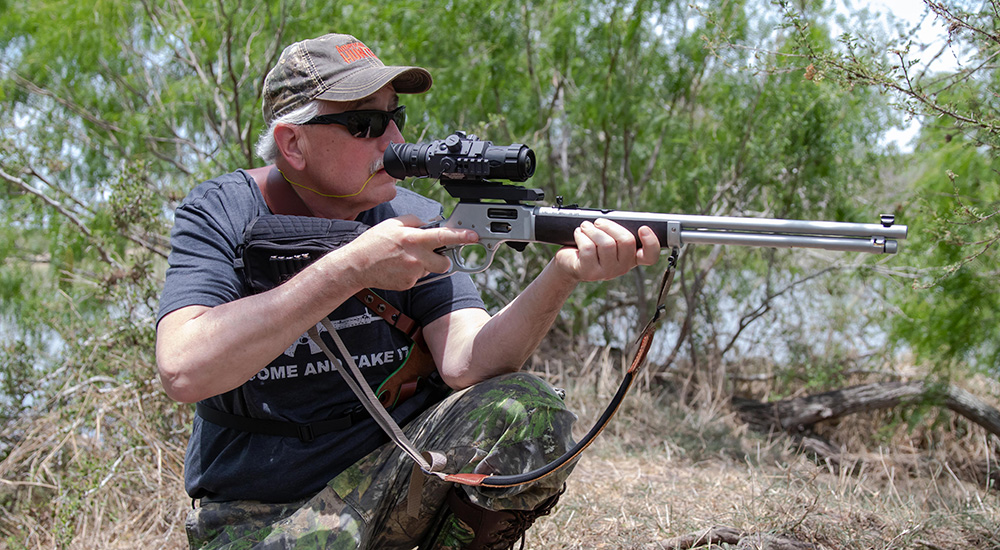
That afternoon, the thermometer read 96 degrees and the humidity felt about the same. My clothing was sweated through within a hundred yards of getting out of the air-conditioned pickup. I’d zeroed the Contractor 25 and the Henry rifle the evening before off a shooting table, and now I wanted some field time with the rig before we headed out that night in search of game.
We approached that first tank, climbed the banks and settled in among the mesquite. A few minutes later and the nutria started swimming. It was tough tracking the rodents in our thermal optics, the water and the mud nearly as warm as the nutria themselves. But my first shot was a solid hit on a smallish nutria, and I was sure the rifle was ready for that night’s hunting.
I just needed to drink a gallon of cold water to prep myself for the night.
■ ■ ■
I’ve hunted with lever actions chambered in .357 Magnum a number of times and really liked shooting this magnum round in the guns, but my experience with Henry Repeating Arms rifles had been limited. So, I requested a Henry All-Weather Side Gate chambered in .357 Mag. for upcoming hunts.
The All-Weather features a 20-inch-long barrel, and the barrel, receiver, lever and magazine are all hard-chrome-plated to shrug off the elements. The hardwood stock and fore-end are sealed with a black moisture-resistant coating, which also held up nicely to the South Texas brush without any noticeable scratching. My All-Weather held 10 rounds of .357 Mag./.38 Spl. that could be loaded through the side gate or through the tube magazine. The lever on my rifle worked smoothly, and the receiver came drilled and tapped for the easy mounting of a rail for an optic. Henry built the rifle with an automatic in-hammer transfer bar safety, too, making it drop-safe.
Then, I heard about Federal Premium’s HammerDown rounds in that same caliber. According to Federal, HammerDown is optimized for use in carbines, and the .357 Mag. load fires a 170-grain bonded bullet. I had to try out that round, I decided, to see what the HammerDown bullet plus the Henry and its 20-inch barrel could do on some Texas hogs and other assorted wildlife.
At my range, I broke in the All-Weather using a variety of .357 rounds, with a Trijicon Credo HX 1-6x24mm scope mounted on it. I eventually switched over to HammerDown, and the accuracy was impressive. At 50 and 75 yards, shooting from a sandbagged rest, I placed three-shot groups at 1 to 1.3 inches, and at 75 yards I pegged a four-shot cluster at 1.6 inches.
Equally impressive was the power this combination provided. According to my Caldwell Chronograph G2, from Brownells, 10 rounds of my HammerDown left the Henry’s muzzle at 1711 fps on average. With the round’s 170-grain bullet, that translated to approximately 1,100 ft.-lbs. of energy at the muzzle, just over 900 ft.-lbs. at 50 yards and 740 ft.-lbs. at 100 yards.
Online ballistic calculators revealed that the energy produced by the HammerDown .357 Mag. in my Henry All-Weather was essentially twice that of a standard 158-grain flat-nosed .357 Mag. bullet leaving a revolver’s 6-inch barrel.
■ ■ ■
The Gonzales Ranch is a mixture of open pastures and mesquite flats, a scattering of cattle along the sandy ranch roads waiting on feed, and clumps of cactus and thick tangles of green brush. The ranch is encircled by a regular Berlin Wall of wind generators located off the property itself, the curved white blades twirling during the day and banks of red lights pulsing at night.
That night after the big nutria hunt found three of us driving the ranch roads in search of hogs and ’yotes, scanning with thermal scopes and handheld night vision units provided by the hunt host, Armasight.
I’d mounted a Contractor 25 thermal scope on my Henry. The Contractor 25 is one of Armasight’s newest thermals (the other being the Contractor 50 launched simultaneously). It is engineered around the company’s proprietary ArmaCORE 12-micron sensor that combines image processing, a wireless communication interface, GPS and internal memory in a smallish package that fits nicely on the Henry’s receiver rail. A turret control system allows shooters to navigate the optics features quickly and intuitively, including the digital zoom application, color palettes and reticles. My unit featured 3X-12X magnification and a 25mm objective lens.
■ ■ ■
It felt cooler that night as we drove around, me and another hunter, Adam, sitting atop the truck’s high-rise platform above the pickup bed. But the relative cool, created by the lack of sun, the breezes and the temps in the mid-80s, was deceptive. By midnight, we hadn’t seen any animals except cattle, and I’d downed another two 20-ounce bottles of water to keep up with my steady perspiration.
The hogs would need water too, so we parked the truck and approached several tanks on foot, walking into the wind to hide our scent and stopping a couple hundred yards away to do thermal scans.
We were scanning on our approach of the second tank when our guide, Lee Gonzales, excitedly whispered, “Nilgai! To the left!”
Adam toted an AR chambered in .458 SOCOM, so he was the shooter on the big, exotic nilgai, an antelope species from India that has found a free-range home in South Texas. I was the designated back-up shooter.
I dropped to my right knee, using my left for support, and lined up the nilgai in my Contractor 25, the llama-shaped animal sporting varying intensities of red in my thermal, the thermal’s color palette set in the “Target” mode. I estimated the animal at 70 yards.
Adam fired and the nilgai dropped straight down. I waited several heartbeats and was just about to pull my eye away from the scope when up jumped the animal. The nilgai spun around, kicking the air, and I waited for Adam to fire again. And waited. But his AR had jammed, and he was working to clear the rifle.
The nilgai had taken a solid shot to the chest, but I didn’t want to take a chance of it heading into the thick brush, so when it spun around and seemed ready to bolt, I squeezed the trigger and sent a 170-grain HammerDown bullet into the animal. The nilgai bounded off, stumbled and went down for good.
I thought I’d hit the nilgai behind the ribs. I had. But in the animal’s frenzied twisting and jumping, the nilgai must’ve turned as I fired and instead of going up through the heart-lung area, the bullet went in behind the left ribs and went towards the back of the animal.
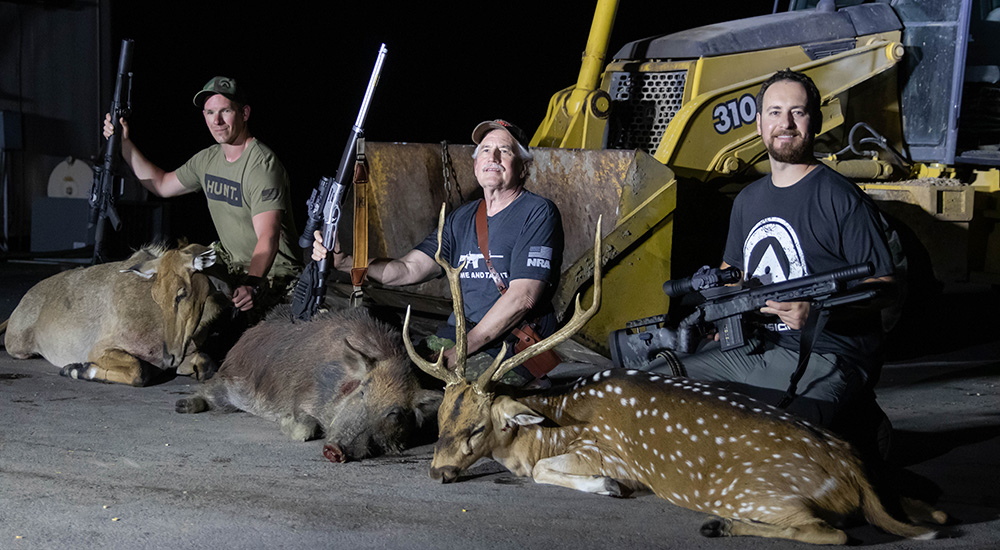 The first night in the Texas heat was the hunters’ best, as they connected on a nilgai and an axis deer and the author bagged the biggest boar of the trip.
The first night in the Texas heat was the hunters’ best, as they connected on a nilgai and an axis deer and the author bagged the biggest boar of the trip.
That bullet traveled 30 inches (I discovered the next day when the nilgai was cleaned), much of it through relatively soft stomach tissue. But it ended its travel by punching into 6 inches of solid nilgai haunch.
Once we’d loaded the nilgai into the back of the truck, we headed off to the next tank. We set up a hundred yards from the water and weren’t in place two minutes before a wild boar eased in from our left, heading for the tank. Lee made some grunts to try to stop the boar or to at least get him to turn. Didn’t work.
Head down, the boar trotted towards the muddy tank. He was 80 yards away when I lined up the reticle on his head and squeezed off my shot. The boar pitched forward, face down and into the ground, kicked and twisted a few times but was done.
This turned out to be our best night of hunting, the boar and the nilgai down and another of our hunters taking an axis buck on the other side of the ranch. And the Henry lever action and the HammerDown held their own against two high-tech rifles, with my boar weighing right at 200 pounds.
■ ■ ■
During my last night in South Texas I sat under a spreading mesquite tree, wind in my face, banks of wind generator red lights blinking on the near horizon, an electronic coyote call in the field ahead of me. The call lay between me and a gut pile from the previous night’s kills, dropped off by ranch guides that afternoon.
Every 20 minutes or so, I set off the call, varying between wounded jackrabbit and screeching cottontail. I was tired, too; good thing my seat was uncomfortable or I might have drifted off.
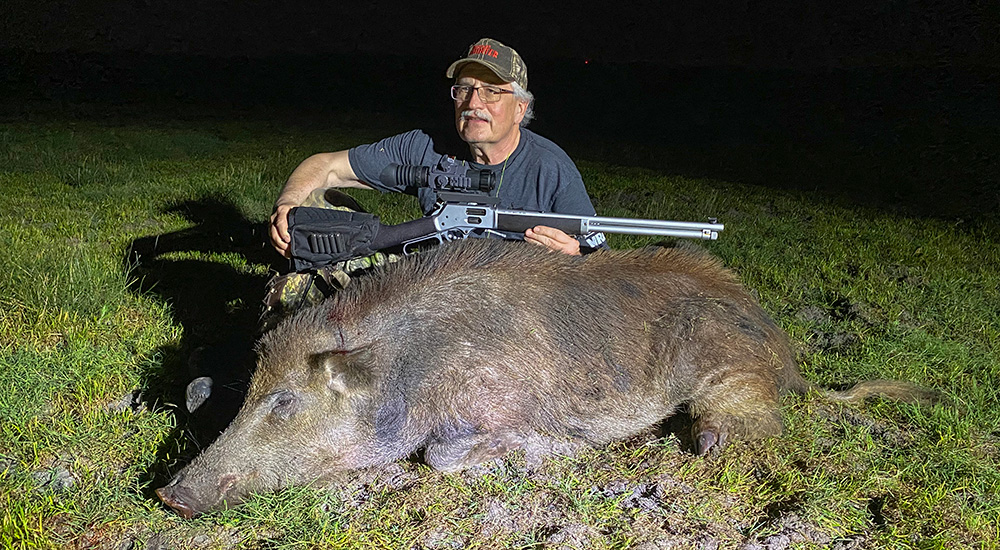
Instead, I kept scanning for movement with my handheld PVS-14 night vision monocular from Armasight. Once, I thought I had a couple of large hogs in the far distance, started my stalk and got close enough to realize I’d spotted a momma cow and her calf.
Around midnight, my PVS-14 caught movement near a line of mesquite, and the Contractor 25 confirmed a coyote on the way to the gut pile.
On the way but never quite there. The ’yote came in downwind of the pile then circled over the top and headed back into the line of mesquite from which he’d initially appeared. Then, he was back in the field, downwind of the pile but unsure if he should go for it.
I stood and grabbed my shooting sticks, made sure all my gear was strapped in place and made my way towards the pile. I was careful to keep the wind in my face and out of the coyote’s line of smell as he paced and stopped, looking at the gut pile.
I walked slowly and quietly, pausing every 10 yards to scan. When I cut the original distance in half, I set up the shooting sticks and laid the Henry across them.
It seemed to take an hour, but it was probably less than two minutes before the coyote paused broadside, an easy target in the Contractor 25. I eased the air out of my lungs, took a half breath, waited a moment and squeezed off a shot. The ’yote dropped where he stood.
Lee and some of the other guys showed up a half-hour later. I loaded myself into the truck and eased back into the seat, glad for a successful hunt and ready for my bed back at the ranch house. But I could feel the wind burn on my face and the dampness of my clothing. So, before we arrived, I drank down another two bottles of cold water.
Gear for a South Texas Night Hunt
Smallish and compact, the Armasight Contractor 25 is the perfect size for the Henry lever action. In three nights of hunting and many hours of “on,” I had to change out the two CR 123 batteries in my Contractor 25 only twice. Armasight rates the unit at six hours run time with two new batteries.
The Contractor also features eight reticle options, and video and photo recording at the touch of a button, Bluetooth 5.0 capability and a standard Picatinny mount. Zeroing the unit is easy thanks to a one-shot zeroing system. Take the first shot, click on the correct function to line up the reticle with that shot then hold down the main menu button to set the reticle. Zeroed!
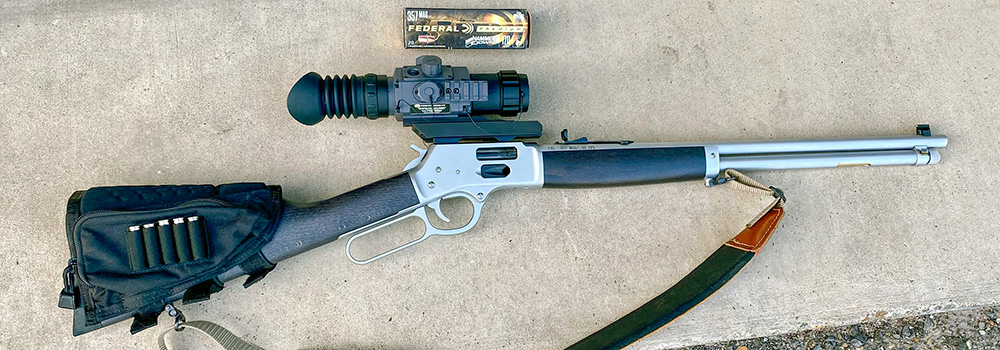
The Armasight PVS-14 Gen 3 Multi-Purpose night vision unit was a real help on this hunt. It gets old very fast trying to scan with a rifle-mounted thermal—it’s much easier to hold the PVS-14 Gen 3 in one hand as the unit is just 4.5 inches long and weighs only 14 ounces. When not in use, the unit hung around my neck on a string. The PVS-14 features a manual gain control, which allowed me to easily adjust the brightness. My unit was on the white phosphor variety though it is available in green phosphor, too. A single AA battery is rated for 50 hours of use.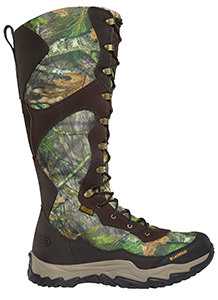
Throughout the hunt, I wore my LaCrosse Venom snake boots done in the Mossy Oak Obsession pattern. Big snakes were definitely out at night, and I was damned glad for the 18 inches of fang protection the Venoms provided. The boots were very comfortable even after many hours of wear and hiking and slipped on and off easily.
Most lever-action stocks lie too low for a good cheek weld when using optics. The solution? Mine was the Urban Warfare Cheek Pad from Blackhawk. It optimized my cheek weld and eye relief by boosting the stock’s comb height. The pad featured a zippered utility pouch and held six rounds of ammunition on the opposite cheek side.
A Hammer of a Bullet
The Contractor 25 and my Henry All-Weather had placed the .357 Mag. bullet just below my boar’s right ear. The bullet angled in and then proceeded to zigzag around the skull, traveling over 10 inches. I retrieved the bullet the next day, plus my back-up shot on the nilgai.
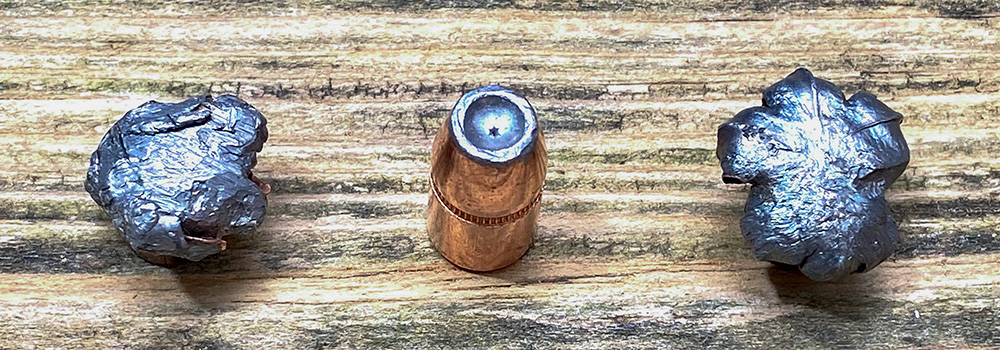
With the boar, the HammerDown bullet retained 155 grains of its original 170 grains and showed a maximum expansion of .58 inch from the original .357-inch diameter. The HammerDown bullet that went through 30 inches of nilgai weighed in at 168.7 grains and expanded to .62 inch. Impressive performance!






















